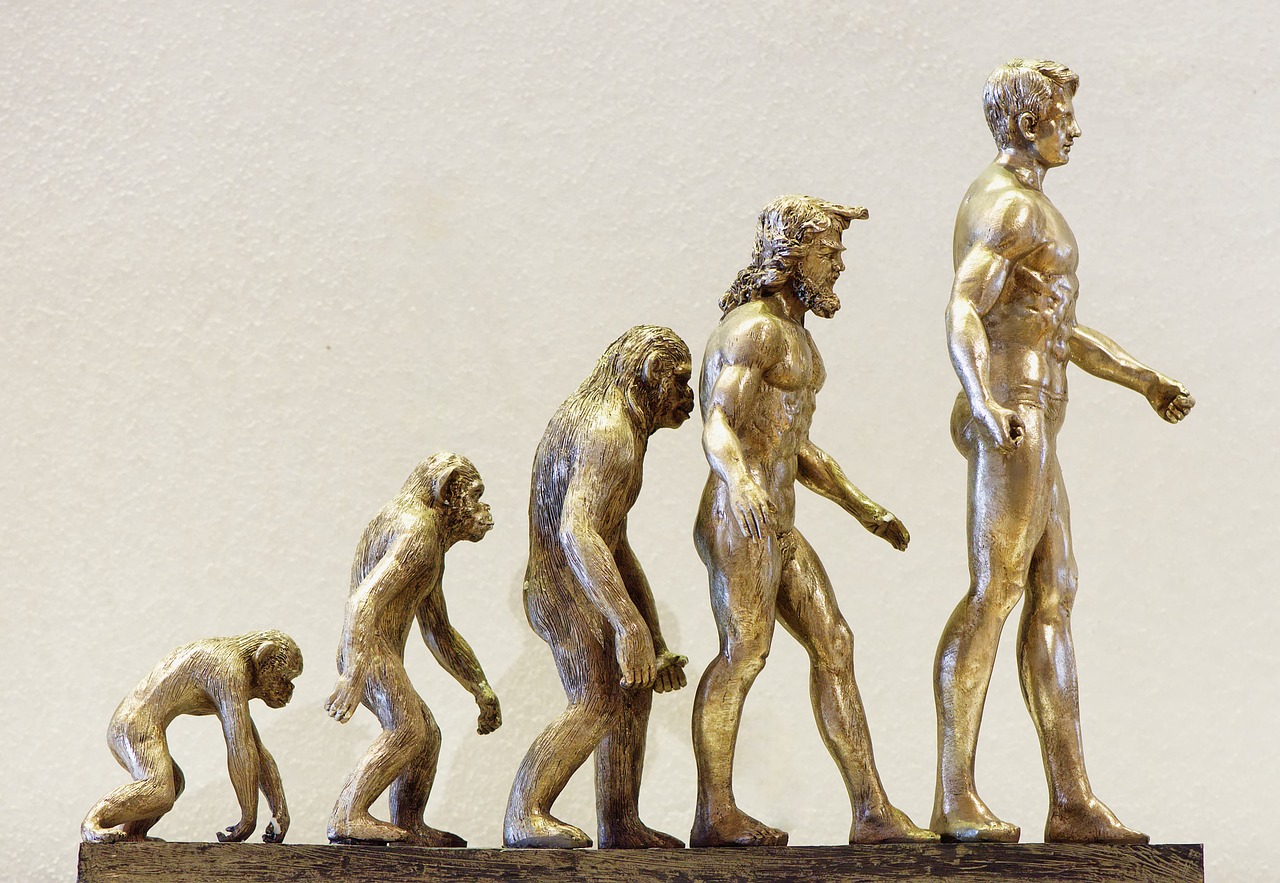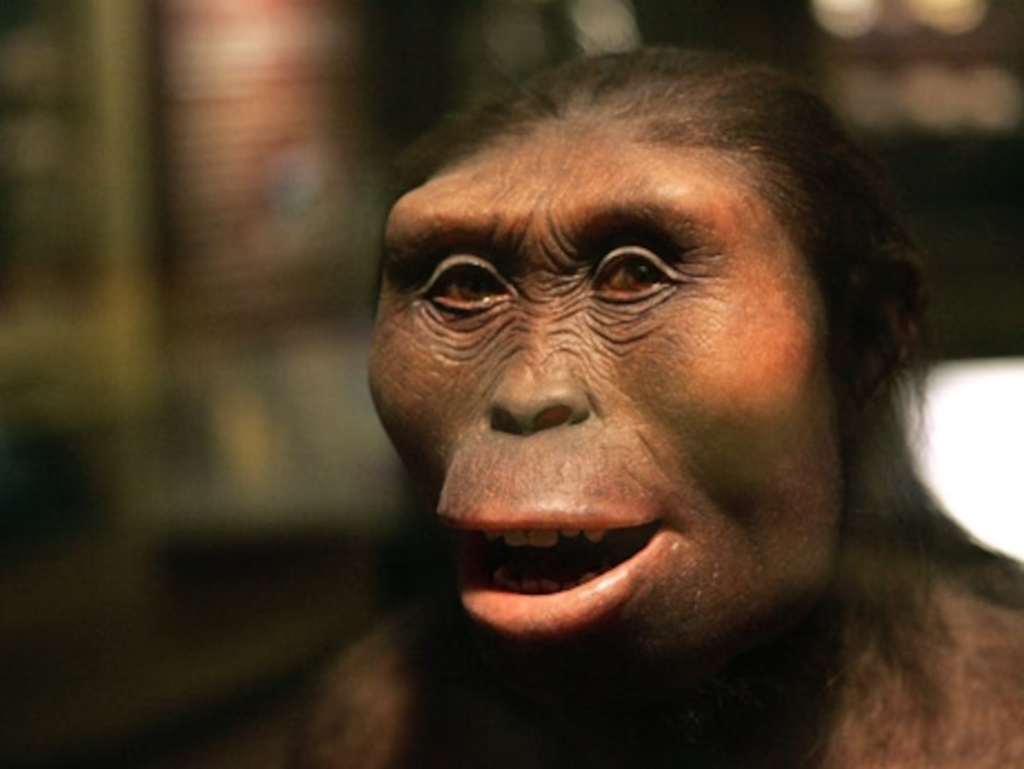Today, let’s meet Lucy, a remarkable figure in our evolutionary story and our earliest known ancestor. Brace yourself up and imagine time-traveling back to 1974, when Lucy was discovered. She shattered long-held beliefs about human origins captivating scientists and enthusiasts alike. In this article, let’s step back in time millions of years ago and understand Lucy’s world, her significance, and how it impacts human evolution.
Discovering Lucy
As I have mentioned earlier, Lucy’s discovery dates back to 1974. While on an expedition to Hadar, Ethiopia in 1973, a young anthropologist, named Johanson spotted the elbow region of her Ulna (funny bone). With the shape and size of the fragmented bone, Johanson was optimistic it belonged to a primate and hypothesised it could probably belong to a Hominin (members of the taxonomic group Hominini, which includes humans and their extinct ancestors and relatives). Upon continuing their search, they could find parts of the cranium, mandible, ribs, pelvis, thighs, and feet.
How do we know she was female?
Since the beginning of this article, we have mentioned Lucy as a ‘she’. How do we know if she was a female? The answer lies in the fact that hominins were sexually dimorphic. That is, males were bigger than females. Considering the size of those bones, it was confirmed that Lucy was female.
This was one among the many questions which scientists have had and have also given answers to. After several years of research by different scientists, one could confirm she was our oldest ancestor. She is the oldest and most complete Skelton of hominin. She was known as the missing link between apes and humans. However, this term is not currently in use as evolution is not an instantaneous single-step transformation. Lucy can be regarded as an important evolutionary intermediate between the more ancient ape-like creatures and the modern human-like creatures. The 3.18 million-year-old is considered the matriarch of the human family.
Why is she so special?
Lucy is well-known and well-loved and is the symbol of Ethiopia. Many believe she represents to the world that Africa is the cradle of Humankind.
Back to 2006: discovering Lucy’s child!
A team led by Alemseged, a post-doctoral researcher discovered a part of the skull protruding from the ground in Dikikia, Ethiopia. After four years of painstakingly extracting all the components of the Skelton, it was discovered that it was none other than Lucy’s child. It was buried 10 km away from the resting site of Lucy in Hadar. They both belonged to the Australopithecus afarensis species.
Lucy’s lifestyle
Several years of research have brought Lucy’s skeleton back to life. They showed she walked upright despite her small brain. She used her ape-like upper body to climb trees to eat, rest, or escape predators. After the discovery of 400 newer fossils, scientists could conclude that Australopithecus afarensis grew, socialized, and evolved on this planet.
Ancestral debate

While some think Lucy is just a great-great-great-aunt of humans, another school of thought feels there could be no better candidate for being the mother of us all. Several paleoanthropologists doubt if Lucy could be considered an ancestor, yet they consider no other ancestor of ours has had an impact like Lucy. A mere 40 % of Lucy’s skeleton is available up until now. It is yet to be reviewed and analyzed by several scientists and researchers to complete the jigsaw puzzle.
The real importance of Lucy
Despite the ‘who is our ancestor’ debate, Lucy is very important. This is because we don’t know what the early human ancestors looked like. Let’s understand Lucy’s significance in advancing our understanding of human evolution and the timing of key evolutionary events. Lucy’s age, determined through fossil analysis, was older than three million years. This discovery pushed back the known age of hominin (ancestors of humans) to a period more distant than previously thought. Lucy’s discovery entered the scientific discussion about when humans and chimpanzees diverged from their common ancestor.
Latest news
Several years after her discovery, Lucy is in the limelight yet again. This time, it is because according to the latest news, Lucy is no longer the earliest known member of the human family. Discoverers claim that Lucy and other members of her species did not walk upright on open savanna grasslands but rather took her first steps on an open grassy woodland with deciduous trees. She wasn’t alone in the landscape but rather we had multiple hominin species at the same time, says Yohannes Haile-Selassie, the director of the Institute of Human Origins (IHO) at Arizona. He is also organising a symposium on Lucy’s impact on human origins.
In search for Lucy’s ancestors
For over twenty years after her discovery, she stood as the sole monarch of her domain. This was until other species emerged from their shadows. This could potentially take the position of Lucy back to Chimpanzee, especially due to her ape-like features. In the 1990’s a team led by Haile-Selassie was on the lookout for Lucy’s ancestors in Ethiopia. They were surprised to see a complete yet crushed skeleton of Ardipithecus ramidus which was 4.4 million years ago. They would a yet another skeleton with a lower jaw, teeth, and bones of hands and feet which dated back to 5.8 million years ago. These skeletons looked more like upright apes than humans. In comparison to them, Lucy looked more human-like.
Ever since paleoanthropologists have been vigorously looking for other fossils that could help find our ancestors. They would be a fossil belonging to Homo, the oldest member of our species only 30 km away from Lucy. Interestingly, a team of scientists even found the great-grandmother of Lucy and named the species Australopithecus anamnesis.
Who is our direct ancestor?
The direct ancestor of Homo is difficult to identify as our understanding of the homo species is limited. The closest we have been to discovering our ancestors was at Ledi-Geraru, near Hadar in Ethiopia. The fossil was over 2.8 million years and it had a lower jaw with worn molars. Around 2 million years ago, Homo habilis and Homo erectus, two key species in the Homo genus, appear in eastern Africa, indicating the emergence of the genus around that time. The diversity of hominins in eastern Africa around 3 million years ago suggests that there may be other candidates besides the known Homo species as direct ancestors of the Homo genus. For instance, an intermediate between humans and Lucy was discovered in Lake Turkana. They had a flatter face and smaller molars.
Previously, Australopithecus afarensis, including Lucy, was commonly regarded as the potential ancestor of later hominin species, including Homo. However, new fossil discoveries have challenged this perspective. Among these discoveries is Australopithecus anamensis, which is now considered a contender as a potential ancestor to later hominins, including those in the Homo genus. The picture doesn’t end here. Researchers require additional fossil discoveries to provide insights into our complex evolutionary history.
Lucy and her significance in tool-making
While Lucy’s status as a direct human ancestor remains uncertain, recent discoveries have shed light on her capabilities and place in prehistoric society. Archaeologist Sonia Harmand and her team discovered crude stone tools at Lomekwi dating back 3.3 million years, challenging previous assumptions about the earliest toolmakers. These tools could have been used by either Kenyanthropus or Australopithecus, including Lucy’s species. Despite having a brain size similar to that of an ape relative to her body size, Lucy and other Australopithecus members likely had the manual dexterity to use crude tools for tasks such as bone smashing. Lucy faces competition from other contemporary hominins regarding tool-making abilities. The discovery of additional fossils, such as teeth, could help clarify the identity of the toolmaker.
Lucy’s adaptability to changing environments
Researchers are using various methods, including analyzing bones, proteins, pollen, plant waxes, and isotopes, to understand the environments where Lucy and her species lived. Around 3.7 million years ago, when the earliest Australopithecus afarensis lived at Hadar, the site featured wooded areas along the shore of a river. Animals would wade into floodwaters, leading to the demise of an entire family of A. afarensis. By 3.2 million years ago, Hadar became much drier, prompting Lucy’s species to adapt to a new diet consisting of tougher foods like sedges, roots, and grasses. This dietary shift coincided with the evolution of bigger jaws in male A. afarensis members. This shows that A.afarensis, including Lucy’s species, exhibited adaptability to various environments.
Conclusion
In conclusion, since researchers are actively looking for new fossils, it could potentially challenge Lucy’s position in the evolutionary lineage. Despite several scientists doubting Lucy’s potential as a human ancestor, Lucy always holds a special place in our hearts. No discovery has yet supplanted Lucy’s significance in the field of paleoanthropology. While Lucy may not necessarily be the direct ancestor of Homo, experts like Wood assert that she remains the leading contender for this role based on current evidence.
Comment below if you enjoyed this virtual evolutionary journey!



Interesting share!